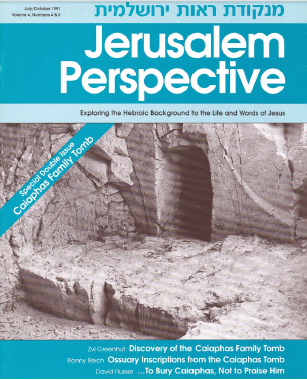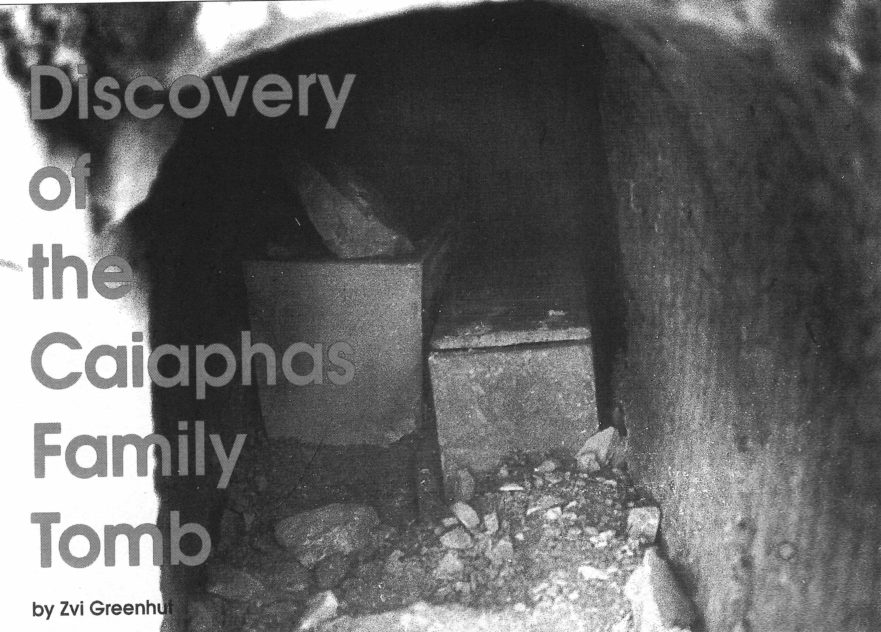How to cite this article: Zevi Greenhut, “Discovery of the Caiaphas Family Tomb,” Jerusalem Perspective 33/34 (1991): 6-11 [https://www.jerusalemperspective.com/2592/].
Many archaeological finds in Israel result from the chance uncovering of various ancient remains during the course of construction work. Some of these fortuitous discoveries prove to be of great importance for understanding the history and archaeology of the land of Israel.
One such find is a Second Temple period burial cave which was discovered in December, 1990, in the Peace Forest near the North Talpiyyot neighborhood of Jerusalem during the development of a park by the Jerusalem Fund. The contents of this burial cave added new and important data to the corpus of Second Temple period ossuary inscriptions, and to our knowledge of burial customs of that period.
The Discovery
The construction superintendent reported the find to the Antiquities Authority after part of the tomb’s roof had collapsed and revealed the burial cave. When I arrived at the site, I found a rock-hewn loculi burial cave, the type of tomb that is typical of the Second Temple period in Jerusalem. The cave is located in an area in which scores of other such tombs have been discovered, all part of the Jerusalem necropolis which stretches southward as far as the vicinity of the Arab village of Sur Bahir.
Premium Members and Friends of JP must be signed in to view this content.
If you are not a Premium Member or Friend, please consider registering. Prices start at $5/month if paid annually, with other options for monthly and quarterly and more: Sign Up For Premium




